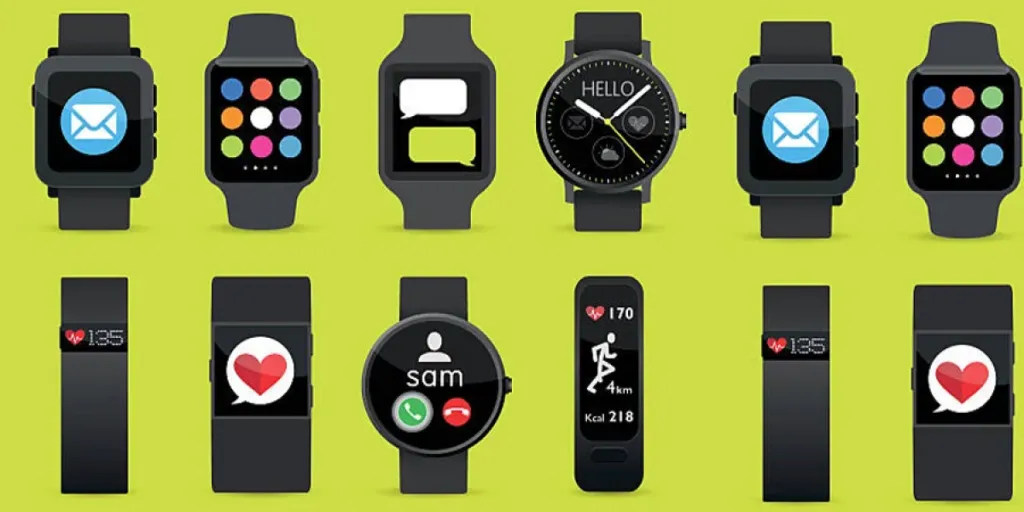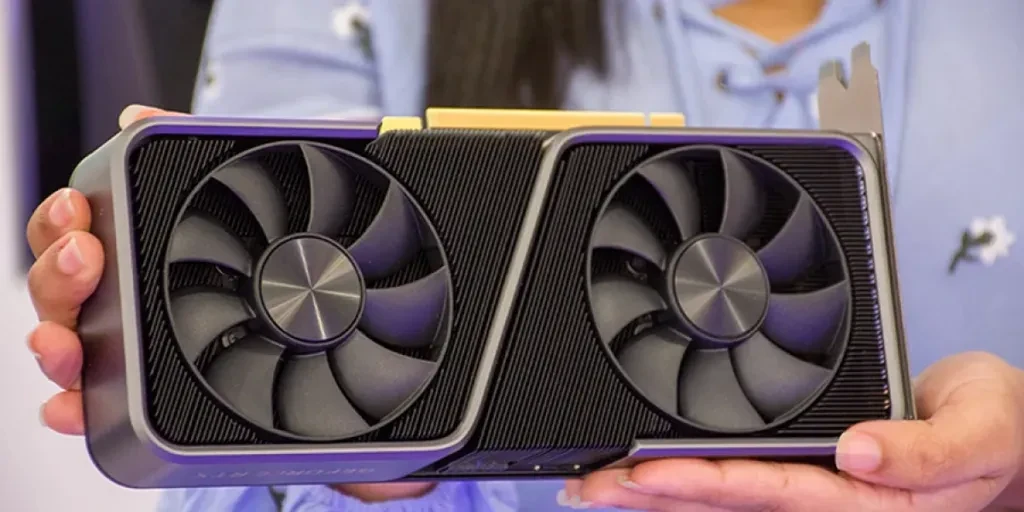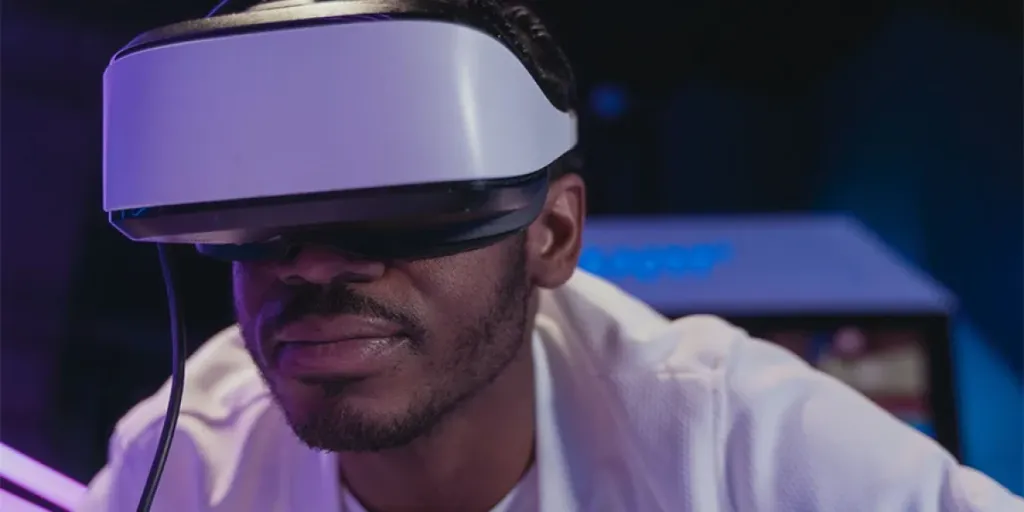Caring for a new child can be exhausting. Some new parents won’t be able to sleep for more than two or three hours at a stretch for weeks. Naturally, they’ll be looking for relief—and that’s where smart bassinets have found their niche. While they look like simple baby beds dressed with extra bells and whistles, they do a lot more than that.
Smart bassinets promise electronic features that rock, soothe, play lullabies, and even track the baby’s nighttime stirrings, all for better, more restful sleep for both the child and parent. Even better, these products offer a great opportunity for businesses hoping to enter the baby/parent market this year.
Read on to discover everything you need to know to stock this trending product in 2025.
Table of Contents
Why smart bassinets hold such appeal
Smart bassinets: What to consider when stocking them
1. Cry-detecting technology
2. Noise and movement
3. App connectivity
4. Safety
5. Portability and storage
6. Optional add-ons and accessories
Pricing, warranties, and brief window of use strategies
Wrapping up
Why smart bassinets hold such appeal
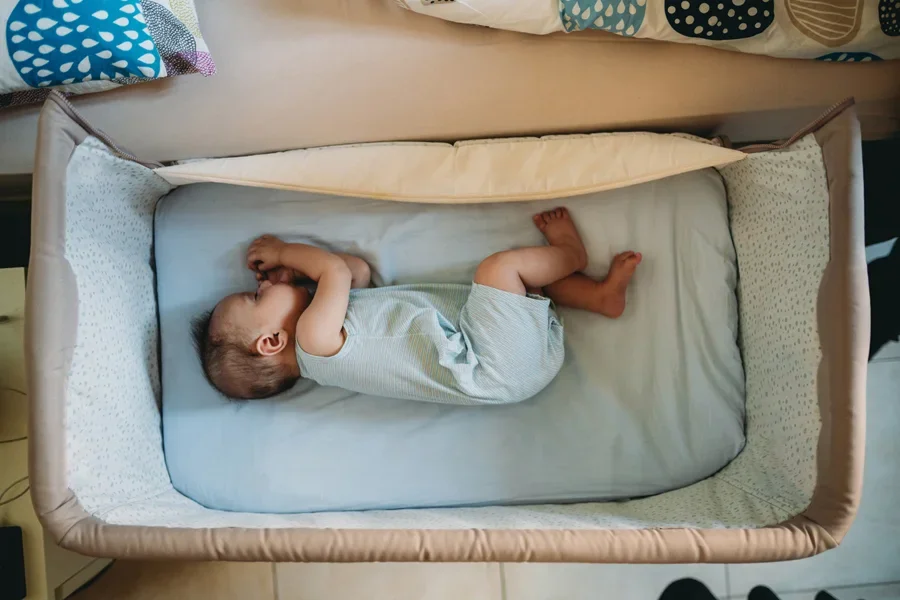
New parents love smart bassinets because they can help a baby settle down (and hopefully stay asleep) without constant intervention from an exhausted caregiver. Instead of picking a baby up and rocking it back to sleep at 3 a.m., consumers can rely on a bed that will respond to fussiness with gentle motion, white noise, or soft music.
But it isn’t all about the quest for more rest. Some smart bassinets have built-in tracking features (often via a companion app) that log how long the baby stays asleep, how frequently it fusses, and which specific soothing techniques work best. This is incredibly compelling for tech-minded parents who already track feedings, diaper changes, and growth charts on their phones.
Smart bassinets: What to consider when stocking them
1. Cry-detecting technology

Smart bassinets use microphones and sensors to detect a baby’s cry, movement, or restlessness. They will start a soothing action immediately after picking up on those cues, like rocking or switching on a lullaby. Some models are also great at distinguishing mild coos from genuine tears, stopping parents from experiencing those tiring false alarms—a detail that can make or break a shopper’s satisfaction.
2. Sound and movement
When a smart bassinet detects a baby’s distress, it taps into its library of soothing sounds to help the baby relax and go back to sleep. These usually include preloaded classical music, nature recordings, lullabies, and white noise. It’s a big plus if consumers can customize the sound—like if a parent wants a specific lullaby or a personal playlist.
While playing the sound, smart bassinets use quiet motors to replicate that rocking feeling babies love. One thing to note here is whether the motion will be manual (requiring the parents to activate it) or automatic (automatically responding to the baby’s distress).
Note: Remember to ask manufacturers if the rocking motion has different intensity levels or if it has a single setting: on or off. Clarity on these details helps retailers match a parent’s expectations with what a bassinet can do.
3. App connectivity
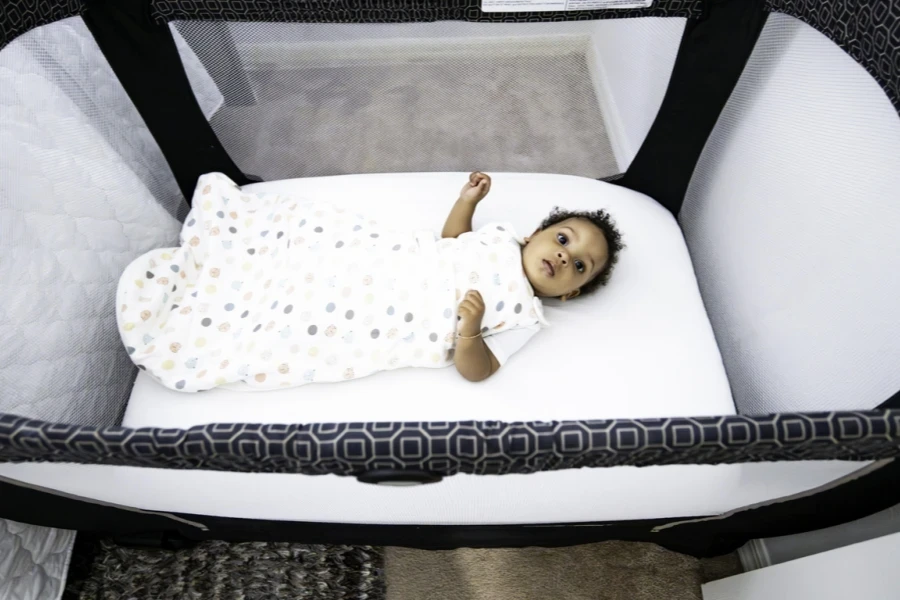
App connectivity adds another layer of convenience. Busy moms and dads who love stats often like seeing a graph of when the baby fell asleep, when they stirred, and how quickly the bassinet’s calming features kicked in. They can also see which features give the best results.
Retailers should also consider whether the bassinet seamlessly integrates with existing platforms like Alexa. That way, consumers can easily ask it to turn on the lights or play a lullaby if they lack the strength to do it themselves.
4. Safety
Any product involving a newborn’s sleep should meet or exceed safety guidelines. Some parents might be wary of a bassinet that moves independently, worrying that the gentle rocking could somehow shift their baby’s position into something unsafe.
However, reputable manufacturers will note that these rocking motions are subtle enough to keep the baby on a firm, flat surface, sticking to medical recommendations. Another area to consider is proper airflow. Many bassinets include mesh sides since ventilation around the sleep surface is crucial.
Shoppers may also ask how the electronics are insulated or whether the motor makes a buzzing sound that could bother a light-sleeping infant (or parent). So, retailers must offer models that meet safety regulations and have been tested thoroughly to reassure consumers that the bassinet won’t worsen their sleepless nights.
5. Portability and storage
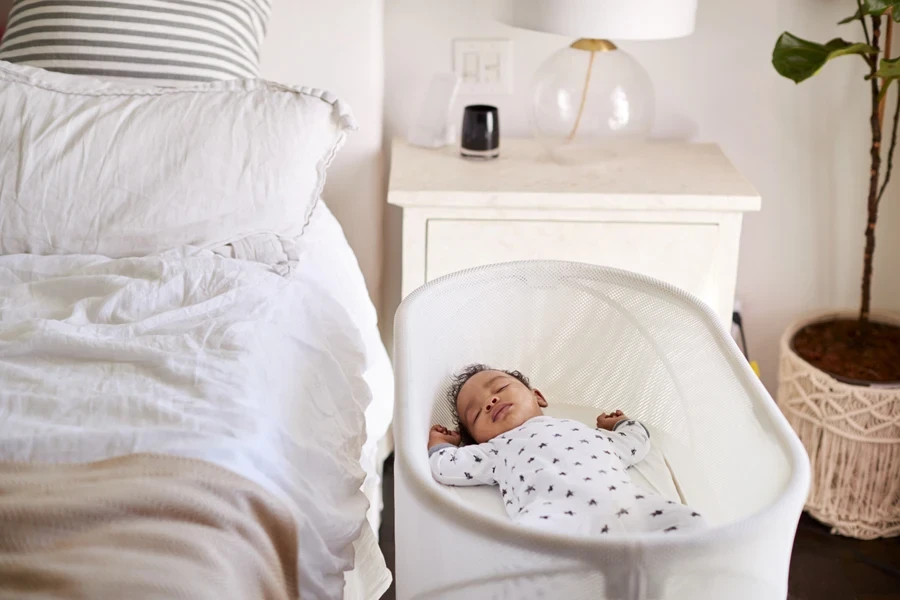
Portability is important for consumers who want to move the bassinet between rooms during naps or who might take it along on weekend visits to Grandma’s house. These consumers will look for foldable designs or options with lighter frames and built-in wheels they can move without assistance.
Another great feature to consider is extra storage. Smart bassinets can come with baskets or shelves under the frame for conveniently storing baby items (wipes and diapers). This feature is handy for anyone with limited space or room-sharing without a good spot for the baby’s items.
6. Optional add-ons and accessories
Consumers will need some accessories in addition to the smart bassinet. This is a great opportunity for retailers to upsell and make more sales. Usually, bassinets need snug mattresses and sheets—and a mattress pad for easy cleaning. Other accessories to consider stocking and offering include:
- Mosquito netting
- Sleep sacks (compatible with the bassinet)
- Water-resistant covers
Note: Some smart bassinets will include these accessories in a bundle, while others won’t. Retailers can choose which path they want to follow, though they must ensure everything fits perfectly.
Pricing, warranties, and brief window of use strategies

Smart bassinets are not a small investment for consumers, especially at the upper end of the market. While most parents won’t have any issues spending on something that improves sleep, others may hesitate if they only want to use it for four or five months before the baby transitions to a crib.
This is where transparency about pricing, warranties, and any extended service plan strategies becomes essential. Retailers can offer buyback or trade-in programs for parents who want to recoup some of their investment when the baby outgrows the bassinet. Or, they can offer a trial period, allowing consumers to return the products if they are not a good fit (remember to be clear about when the trial period starts and ends).
Alternatively, they can pitch flexible payment plans or highlight a strong resale value if the bassinet remains in good shape. These strategies are great for reassuring consumers that they can still get something out of their smart bassinet when they no longer need it.
Wrapping up
Bringing smart bassinets into your lineup can be a strategic decision that taps directly into new parents’ hopes (and exhaustion). The best approach is to recognize that each family’s needs and preferences vary widely. They may want maximum tech or only gentle motion and a little peace of mind.
Businesses should consider stocking various options to cater to these priorities (like a mid-tier bassinet for those on a budget, a feature-rich model for tech enthusiasts, and a more travel-friendly option). This is a great way to have something for anyone who visits your store, whether online or offline.

